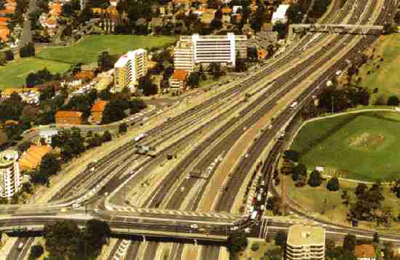
case studies / Environmental credentials of roads in Australia

This case study estimates the life cycle environmental impacts of the construction, maintenance and utilisation of asphalt and concrete roads in Australia. The road construction systems investigated include urban highways and residential streets. Various types of subgrade are also considered. The investigation includes the use of recycled reinforced steel and the use of blast furnace slag, as a cement and aggregate replacement.
To provide a fast and user friendly, interactive LCA case study, which allows the user to investigate the life cycle impacts of a range construction, transportation, recycling and utilisation, options.
{Building details}
The system analysed included the manufacture of all materials from resources in the ground, construction site activities, construction equipment, repairs/maintenance and finally, decommissioning.
The entire life cycle is considered, from resources in ground through to demolition and recycling/landfill of the structure. Landfill emissions are excluded.
Transportation mode and distance are included for each material.
Environmental impacts investigated were resource energy consumption, GGE (greenhouse gas emissions), NOx, SOx, NMVOC (non-methane volatile organic compounds), SPM (suspended particulate matter), and fresh water consumption.
Gross energy (GJ/t), or high heating value (HHV), is used. Feedstock energy is included for all materials except timber.
{Feedstock energy}
IPCC weighting factors (global warming potentials) are used in the calculation of greenhouse gas emissions, eg for CH4 and N2O.
Australian LCI data. The data are maintained in EMMA (Eco-model for Material and Manufacturing Assessment), BHP's LCA data system.
Specific data were sourced from the Australian Road Standards, the Australian Road Research Board, the Roads and Traffic Authority of NSW and a final year civil engineering research project at the University of Newcastle by Steven Pratt.
The study did not require any allocation. Recycled materials have displacement credits allocated based on the displacement of virgin production.
The approach and allocation rules used in the LCI data conform with ISO guidelines for LCA, and attempt to simulate reality as closely as possible.